Before you jump to any quick conclusions about the type of pest you have, you need to first determine if the pest you’re up against is, in fact, a mouse at all. There are all sorts of wild critters who inhabit residential homes and each one requires different eradication techniques. We’ll help you determine if you’re dealing with rats, mice, or a different pest altogether. Here’s how to identify a rodent problem.
Rat Or Mouse – How To Identify A Rodent Problem
House mice are fast scavengers that prefer to eat seeds and insects, but they will eat
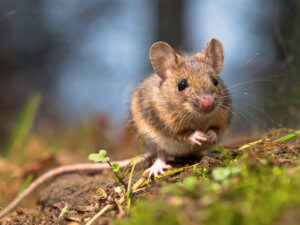 Take A Look At Our Restaurant Pest Control Service If You Have A Mouse Problem
Take A Look At Our Restaurant Pest Control Service If You Have A Mouse Problem
many kinds of food. Mice are extremely good climbers and can jump up to a foot high. They are color blind and probably need a seeing-eye dog as they cannot see clearly beyond 6 inches.
House mice live in structures, but they can survive outdoors, too. They prefer to nest in dark, secluded areas and often build nests out of paper products, cotton, packing materials, wall insulation, and fabrics.
Norway rats are habitually nighttime creatures and enter homes in the fall searching for food when 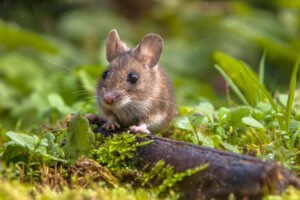 their outside supply becomes scarce as winter nears. These rats are known to gnaw through almost anything (including plastic or lead pipes!) looking for food or water. Norway rats are social butterflies and build burrows close to their friends.
their outside supply becomes scarce as winter nears. These rats are known to gnaw through almost anything (including plastic or lead pipes!) looking for food or water. Norway rats are social butterflies and build burrows close to their friends.
Outdoors, Norway rats typically live in fields and farmlands. These rats frequently burrow in the soil near river banks, in garbage and woodpiles, and under concrete slabs. Indoors, Norway rats often nest in basements or piles of debris.
Rodents can gain entry to a home or commercial building through a hole the size of a quarter. Rats do not have collapsible skeletons, but their bodies are long and flexible, allowing them to squeeze and wiggle into the tiniest spots.
When determining if they can fit through a hole, rats will often feel out the opening with their whiskers first. Once they’ve gotten a good feel for the space, they’ll move right on in and soon become a very pesky and unwanted house guest.
Do you have a rodent problem? Or is it another pest to blame?
Other pests may be to blame for the damage being done to your home. The most common pest that creates damage similar to that of rodents is termites. Termites are wood-eating machines that can munch through both wood and drywall. You need to determine the problem in your home so you can do proper pest management.
Termites Vs. Rodents
One way to tell the difference between a termite or rodent infestation is that termite damage often imitates the look of peeling paint or water damage, often destroying entire sections of a wall. Rodent damage, on the other hand, takes the form of small holes and is often scattered around the entirety of your home. Also, rodents will often chew through other materials such as furniture, food containers, electrical wiring, and even concrete!
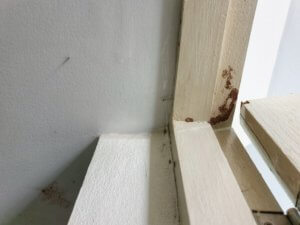 .
. 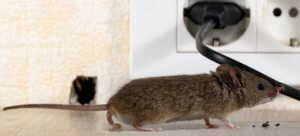
Roach Droppings Vs. Mice Droppings
Another type of pest that’s often misidentified as a rodent is cockroaches. Similar to rodents, cockroaches will leave droppings and gnaw through food containers. The best way to tell these two pests apart is the size of their droppings.
The bigger droppings are probably rat droppings, which are about the length of a quarter. Mice droppings are about half that size while cockroaches have the smallest and roundest droppings of the three at around 1mm in size.
German roach droppings will appear similar to black dirt, dark brown coffee shavings, or even ground pepper. Unlike rodent droppings, roach fecal will appear less formed and more like smeared specks.
Warning Signs of Rodents – Mice And Rats
Rodents are a threat to your family’s wellbeing and can be extremely destructive to your property. They carry all kinds of harmful diseases such as hantavirus, leptospirosis, lymphocytic choriomeningitis (LCMV), Tularemia, and Salmonella. Aside from the health risk, they can wreak havoc on a home in record time due to their constant need to nibble and burrowing habits.
The one up-side to a rodent infestation is it’s usually pretty easy to catch early on if you’re looking for the right signs in the right places. The best way to determine if you truly have a rodent problem is to look for signs of a rodent infestation.
- Droppings/urine inside cabinets, kitchen drawers, or wall corners.
- Unexplained holes in walls, clothing, insulation, or other materials.
- Gnaw marks on furniture.
- Scratching noises in the walls.
- Squeaking or scampering.
- Oily hair marks in corner wall areas where rodents frequently travel.
What Sort Of Damage Do Rodents Cause?
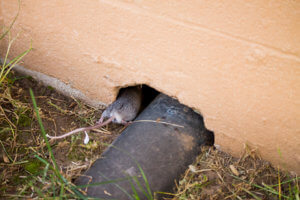
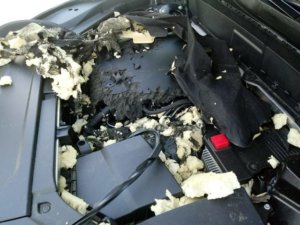

If you see or hear any of these warning signs of a rodent infestation in your home you’ll want to either start setting snap traps immediately or call Gunter Pest & Lawn today for our rodent control service. Even if you’ve only seen one rodent, chances are there’s many more hiding in your walls. Mice and rats reproduce like there’s no tomorrow and so it’s imperative that you eradicate the issue before it becomes a full-on infestation.
We hope this helps you with how to identify a rodent problem in your Kansas City home or office.
Frequently Asked Questions ABout Rodent Infestations
Q: What sort of damage do rodents cause?
A: Rodents can cause a lot of damage. They chew on wires, which can lead to electrical problems or even fires. They gnaw on wood, plastic, and insulation, ruining structures and belongings. Rodents can also contaminate food and spread diseases through their droppings and urine.
Q: How to keep rodents out of a car engine?
A: To keep rodents out of your car engine, park in a garage if possible. Use rodent deterrents like peppermint oil or mothballs around the engine area. Regularly check under the hood for signs of rodents, such as droppings or nesting materials. Keeping the area clean and free of food scraps can also help.
Q: Does Irish Spring soap keep rodents and bugs away?
A: Some people claim that Irish Spring soap can repel rodents and bugs. The strong scent may deter them temporarily, but it’s not a guaranteed solution. It might work as a part of a broader pest control strategy.
Q: How to get a rodent out of the wall?
A: To get a rodent out of the wall, you can try placing traps near entry points like vents or cracks. If you hear scratching, it might indicate where they are. Sealing gaps and using deterrents can help prevent more from getting in. If the problem persists, you might need to call a professional.
Q: How to get rid of rodents in the attic?
A: To get rid of rodents in the attic, first, find and seal entry points. Set traps or use rodent baits to catch them. Remove any food sources and nesting materials. Keeping the attic clean and clutter-free can help prevent future infestations. For severe problems, professional pest control may be necessary.
Be Sure To Check Out Some Of Our Services:
Silverfish — Fleas — Spiders — Bed Bugs








